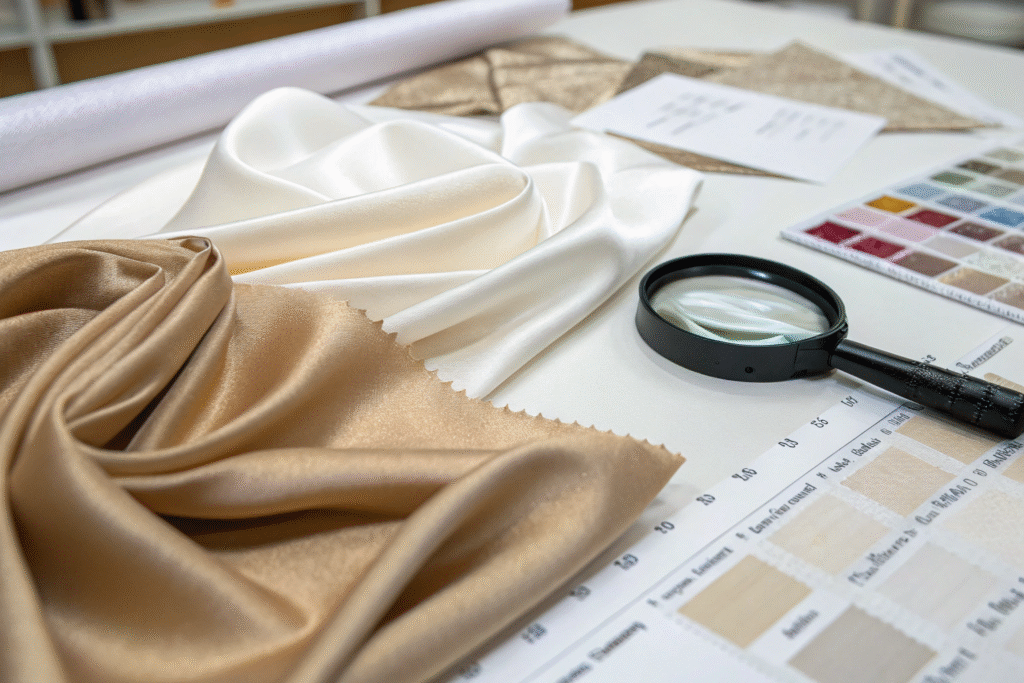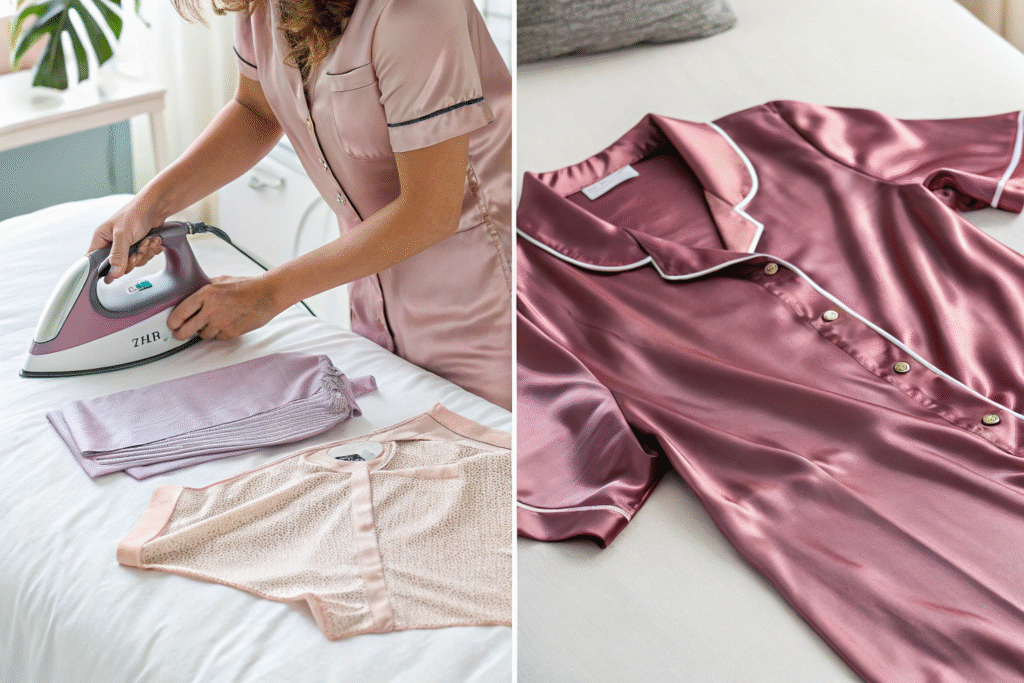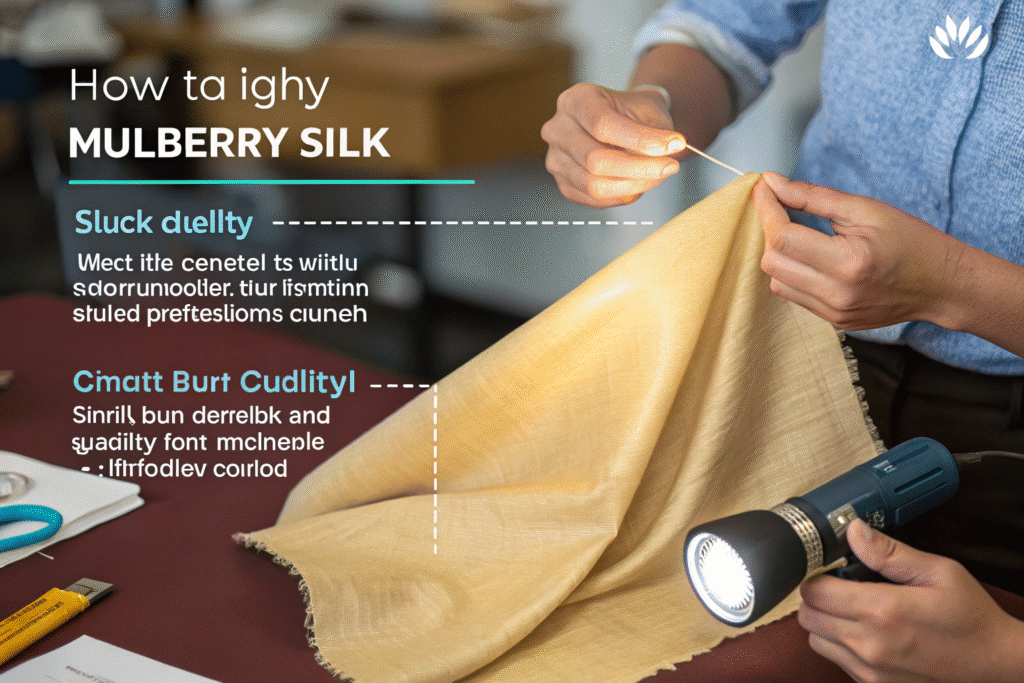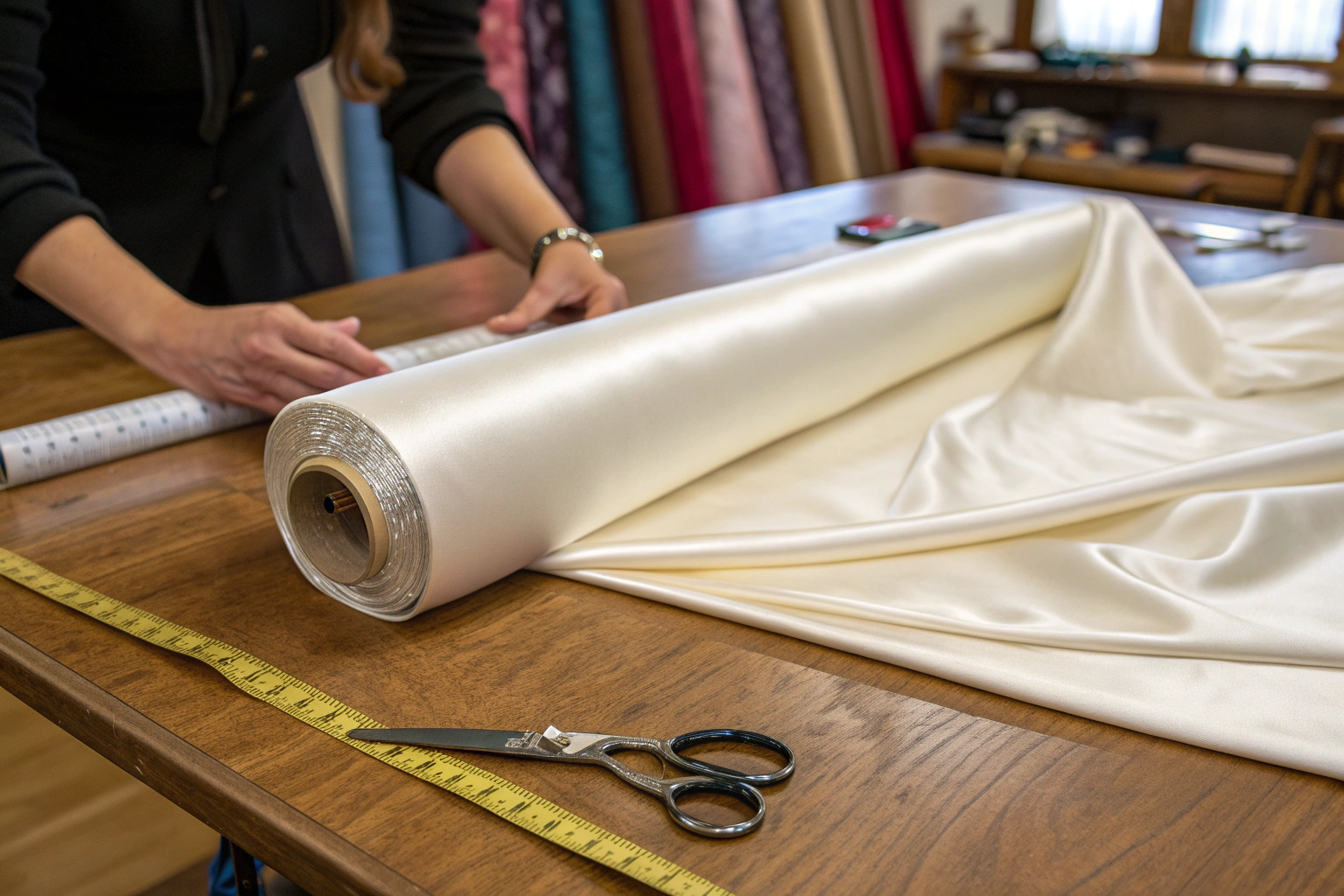For centuries, silk has been the epitome of luxury in the fashion world. But when you hear the term "mulberry silk," you might wonder what sets it apart. Is it just a marketing buzzword, or does it represent a genuine step up in quality? As a fabric expert with over two decades in China's textile hub, Keqiao, I help global brands navigate these exact questions every day. Understanding the true value of mulberry silk is crucial for making informed sourcing decisions that balance cost, quality, and customer satisfaction.
Mulberry silk is the highest grade of silk produced by Bombyx mori silkworms that feed exclusively on mulberry leaves. It is absolutely worth it for brands seeking superior sheen, durability, and a truly luxurious feel for their high-end apparel, lingerie, and home textile collections. Its unparalleled quality justifies the investment, leading to better-performing final products that command higher price points. This article will peel back the layers on mulberry silk, comparing it to other silks and providing a clear cost-benefit analysis for your business.
Let's dive into the details that make mulberry silk a prized possession in the textile industry and help you decide if it's the right fabric for your next collection.
What is the difference between mulberry silk and regular silk?
The term "regular silk" can be vague. In many cases, it refers to wild silk, such as Tussah silk. The primary difference lies in the silkworms' diet and cultivation process. Mulberry silk comes from silkworms reared in a controlled environment and fed only mulberry leaves. This meticulous care results in fibers that are consistently white, fine, and incredibly long. In contrast, wild silkworms eat a variety of leaves and plants, leading to shorter, coarser, and often off-white or tan-colored fibers. This fundamental distinction impacts everything from the fabric's feel to its market price.

Why is the source of the silkworm's diet so important?
The diet of the Bombyx mori silkworm is critical because it directly determines the quality of the silk filament. A strict diet of mulberry leaves provides the ideal nutrients for the silkworms to produce a saliva that is exceptionally pure and consistent. This results in a single, continuous filament that can be up to 1,600 meters long. The consistency in diet means the filament has a uniform diameter and a smooth, almost perfectly round cross-section. This roundness is what gives mulberry silk its characteristic brilliant luster, as it reflects light evenly. In comparison, the irregular diet of wild silkworms creates shorter, uneven filaments with a more flattened, irregular shape that scatters light, resulting in a duller sheen.
How does the weaving process affect the final mulberry silk fabric?
Even the highest quality mulberry silk yarn can be woven into different types of fabric, each with unique properties. The most common weaves are charmeuse and habotai. Charmeuse weave, known for its glossy front and dull back, maximizes the innate luster of mulberry silk, making it ideal for luxurious lingerie and evening wear. However, this weave is also more delicate. Habotai, or silk satin, is a plain weave that is more durable and lighter, often used for linings and scarves. At our manufacturing facility, we control the weaving tension and use specific loom settings to protect the delicate fibers, ensuring the final fabric retains its strength and beautiful drape. The choice of weave is a crucial step in tailoring the fabric to the end-product's requirements.
What are the pros and cons of using mulberry silk?
Understanding the advantages and limitations of mulberry silk is key to determining its suitability for your product line. Its benefits are significant, but a professional sourcing manager must also be aware of its challenges to manage production effectively.

What are the main advantages for clothing manufacturers?
For clothing manufacturers, the advantages of mulberry silk are directly tied to product quality and consumer appeal. Its hypoallergenic and temperature-regulating properties are major selling points. The smooth fibers are resistant to dust mites and mold, making it ideal for sensitive skin. Furthermore, it keeps the wearer cool in summer and warm in winter, enhancing comfort. From a production standpoint, its incredible strength, despite its delicate feel, means garments have good durability. Its excellent dye affinity allows for vibrant, rich colors that last, a critical factor for fashion brands. This combination of consumer benefits and manufacturing reliability makes it a premium choice for brands like ours that supply to major retailers.
What are the potential drawbacks to consider in production?
The primary drawbacks are cost and care. Mulberry silk is one of the most expensive natural fibers, which can impact your bill of materials and final product pricing. In production, it requires special handling. It can be slippery to cut and sew, demanding skilled laborers and specific machinery settings. It is also susceptible to damage from harsh chemicals used in digital printing or bleaching if not processed correctly. From a care perspective, end-consumers often need to dry clean or hand wash garments, which can be a deterrent for some market segments. Therefore, it's essential to weigh these factors against the target market's willingness to pay and care for luxury items.
How to identify high-quality mulberry silk fabric?
For a buyer, distinguishing top-grade mulberry silk from inferior alternatives is a critical skill. Quality directly impacts the manufacturability and final appearance of your garments.

What is the 'burn test' and how can it verify authenticity?
The burn test is a simple, traditional method to verify pure silk. Take a few threads from the hidden seam allowance of a sample and carefully burn them with a lighter. Genuine mulberry silk will burn slowly and will not stay lit. It will smell distinctly like burning hair or feathers because it is a protein fiber. After extinguishing the flame, the residue will be a crispy, black ash that can be crushed into powder. In contrast, synthetic fabrics like polyester will melt, smell like plastic, and form a hard, bead-like residue. This test is a quick and effective way for quality control teams to spot-check incoming fabric shipments, though it should be done with extreme caution.
What should you look for on a fabric specification sheet?
The fabric specification sheet, or tech pack, is your most reliable tool. First, check the fiber content. It should state "100% Mulberry Silk" or "100% Bombyx mori Silk." Next, look at the momme weight. Momme (mm) is the unit used for silk density. A higher momme weight indicates a heavier, more durable, and higher quality fabric. For example, scarves are often 16-19mm, while high-end bedding can be 22-30mm. Also, examine the thread count and the type of weave listed. Reputable suppliers, like our company, provide detailed spec sheets and have our fabrics tested in CNAS-accredited labs, providing verifiable data on colorfastness and shrinkage to international standards.
Is mulberry silk a cost-effective choice for clothing lines?
This is the core question for any business decision. The answer isn't a simple yes or no; it depends on your brand positioning, target price point, and customer expectations.

How does the initial cost compare to the long-term value?
The initial cost of mulberry silk is high, but the long-term value can justify the investment. While a polyester satin blouse might cost a fraction to produce, it lacks the breathability, comfort, and prestige of silk. A well-made mulberry silk garment can retain its beauty for years, supporting a brand narrative of sustainability and quality over fast fashion. This allows you to command a significantly higher retail price. Furthermore, because of its durability when cared for properly, the cost-per-wear for the end-customer can be lower than that of a cheaper garment that pills, loses shape, or fades quickly. For brands, this translates to higher customer satisfaction and loyalty.
For which market segments is it most suitable?
Mulberry silk is most cost-effective for specific market segments. It is ideal for luxury fashion brands, high-end lingerie, premium sleepwear, and exclusive home textiles like duvet covers and pillowcases. It is also perfect for brands with a strong focus on sustainability and natural materials, as silk is a biodegradable, renewable resource. For brands targeting the mass market with a low price point, it may not be feasible. However, incorporating mulberry silk accents, like a lining in a blazer, can add a touch of luxury without dramatically increasing the overall cost, providing a smart compromise for brands looking to elevate their product offering.
Conclusion
In summary, mulberry silk stands apart as the pinnacle of silk quality, defined by its exclusive production process, exceptional strength, and unparalleled luxurious feel. While its higher cost and specific care requirements are important considerations, its benefits in creating premium, desirable, and durable products are undeniable. For brands aiming to compete in the luxury segment or elevate their collection with a fabric that speaks of quality and sophistication, mulberry silk is undoubtedly worth the investment. It is a strategic choice that pays dividends in brand perception and customer satisfaction.
If you are considering integrating high-quality mulberry silk into your next clothing line, we are here to help. Our expertise spans the entire process, from sourcing the finest yarns to weaving, dyeing, and finishing the fabric to your exact specifications. We ensure rigorous quality control and can guide you on the most cost-effective and beautiful applications for your designs. For a consultation on your specific needs, please contact our Business Director, Elaine, at elaine@fumaoclothing.com. Let's co-create value for your brand.










